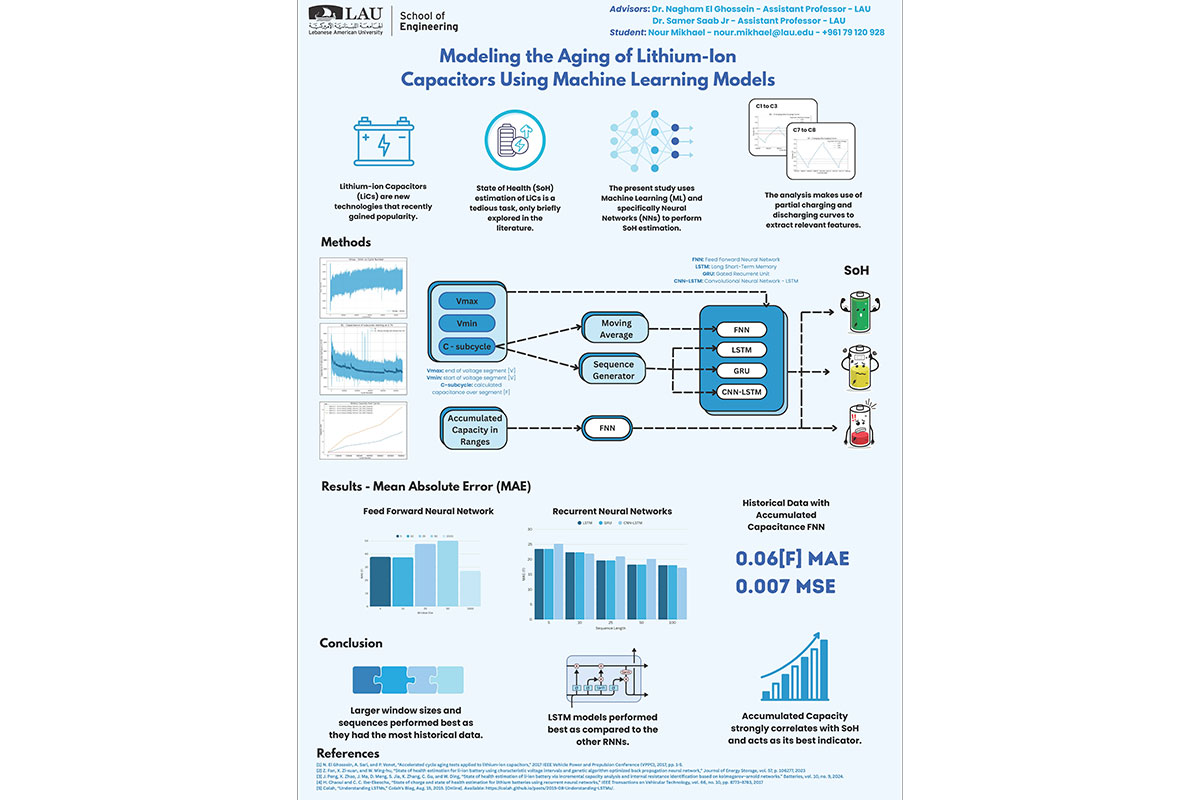Predicting the Capacitance Degradation of Lithium-Ion Capacitors Using Machine Learning
Project Details
- Student(s): Nour Mikhael
- Advisor(s): Dr. Nagham El Ghossein, Dr. Samer Saab Jr.
- Department: Electrical & Computer
- Academic Year(s): 2024-2025
Abstract
Lithium-ion Capacitors (LiCs) are gaining popularity in energy storage systems, yet machine learning (ML) prediction of their State of Health (SoH) has received limited attention. This research investigates the potential for accurate capacitance estimation, which is an indicator of the SoH, using only partial charging data acquired over short time intervals. Different ML models and parameters for capacitance estimation of LiCs were explored using data from accelerated aging tests. Input features included subcycle voltage delimiters and capacitance values derived from those short charge subcycles, with total cell capacitance, obtained
from Electrochemical Impedance Spectroscopy as the prediction target. Machine learning approaches included Feedforward Neural Networks (FNNs) using various moving average window sizes of 1 to 1000 for input feature smoothing, and several Recurrent Neural Network (RNN) architectures, namely Long Short-Term Memory (LSTM), Gated Recurrent Unit (GRU), and Convolutional Neural Network-LSTM (CNNLSTM), leveraging different sequence lengths of 5 to 100 for historical
data inclusion. FNN models performed well with small window sizes with a Mean Absolute Error (MAE) of around 37F and very large window sizes with MAE 27F, but showed performance degradation when intermediate window sizes were considered. Among RNNs, LSTM networks consistently demonstrated the best performance, achieving an MAE of 14F with a sequence length of 100. Additionally, a separate model leveraged accumulated capacity as a physics-informed feature,
yielding an MAE of 0.06F. This highlights that while advanced RNNs can model historical degradation, physics-informed feature engineering achieves high-accuracy capacitance estimation in LiCs.
